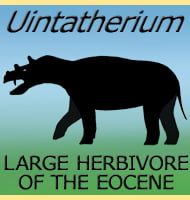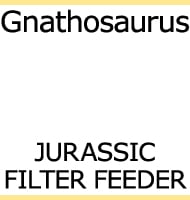In Depth
In 1983 a fossil hunter named William Walker discovered a large fossilised claw in a clay pit. Retrieval of this claw also resulted in the recovery of associated bones that revealed a new and previously unknown type of theropod dinosaur. Alan Charig and Angela Milner described and formerly named the new dinosaur Baryonyx after the initially discovered large and heavy claw. The species name B. walkeri is in honour of William Walker.
The key area that made Baryonyx different from previous discoveries was the fact that its skull resembled the skull of a crocodile, and not that of other more classically known dinosaurs like Megalosaurus. Today Baryonyx is referred to as a spinosaurid dinosaur, the group named after the later and much larger Spinosaurus. An interesting association between these two dinosaurs is that while Spinosaurus was discovered and named much earlier than Baryonyx in 1912, its skull was not known until the 1990’s. It was partly the discovery of Baryonyx along with other spinosaurids that allowed for this to be realised and up until this point Spinosaurus’s skull was recreated to look just like any other carnosaur theropod.
The current classification of Baryonyx is a little muddled due to the recovery of other spinosaurid material that may or may not be the same as Baryonyx. The first possible synonym is Suchosaurus, which was named in 1841 after only the teeth. These teeth are almost certainly those of a spinosaurid, yet are still slightly different from those of Baryonyx. To complicate matters though, Baryonyx teeth are known to show variations between individuals. Although Suchosaurus has since been considered a nomen dubium by some palaeontologists, its existence has still caused some concern about the future for Baryonyx. One option could be to split every Baryonyx specimen that shows individual tooth variation into its own species. The other would be for Suchosaurus to be declared the senior synonym of Baryonyx, resulting in all future Baryonyx specimens to be referred to Suchosaurus.
The latter scenario actually happened for the dinosaur Troodon, which itself was originally named after only teeth, although in this case the teeth were very characteristic of the genus. Another option is if a special case is made for Baryonyx as what happened with Tyrannosaurus, where originally Tyrannosaurus was named Manospondylus gigas although most people only knew the vastly more popular name of Tyrannosaurus. This resulted in Tyrannosaurus being assigned nomen protectum, or ‘protected name’ status, meaning that even though Manospondylus was first, Tyrannosaurus is the name that will now always be used to refer to the genus.
The second synonym possibility is the similar dinosaur Suchomimus that has been discovered in Africa. Suchomimus lived at a later stage in the Cretaceous and is itself larger than Baryonyx. However the Baryonyx holotype is thought to represent an individual that is not fully grown and it is also not known if Suchomimus itself was fully grown either. The skeletons between these two genera are very similar except for the taller neural spines of the vertebrae that are known in Suchomimus. While different, it could be that the larger neural spines grew with age and were not present in Baryonyx because it was not yet old enough to grow them when it died. Should it be proven that Suchomimus is the same genus as Baryonyx then Suchomimus would become a junior synonym which means material for Suchomimus would be re-labelled to point to Baryonyx.
The fact that Baryonyx is so far mostly known from Southern England and Northern Spain suggests that it lived around the edges of huge body of water called Wealden Lake. Back in the Cretaceous this lake submerged a good portion of Western Europe including most of France and parts of Southern England. Rivers running into it formed an expanse of river deltas that would have been the ideal habitat for spinosaurid carnivores like Baryonyx that seem to have been specially adapted to hunt for fish.
Baryonyx is usually envisioned standing on the edges of these water ways, perhaps actually in the shallows and staring towards the water looking for fish. The claws were originally thought to have been used for swiping into and pulling fish out of the water, however this does not take into account the very special crocodile-like adaptation of the skull. If the claws were the primary means of prey capture then surely Baryonyx would have had a regular carnosaur type skull? The skull itself is much longer than it is wide or high and would have afforded Baryonyx a significant reach into the water. You can see the benefits of having long jaws when you see a heron or stork striking for fish in the water. Later studies associated with Spinosaurus however, now suggest that at least some spinosaurid dinosaurs were mostly aquatic, actually swimming through the water after prey. Baryonyx also has the addition of a notch at the end of its jaws created by a curved recess in the premaxilla, and a rounded protuberance in the lower jaw that roughly matches the curvature of the above recess. This feature is commonly seen in crocodiles and helps to increase grip on struggling and slippery prey like fish. The teeth are also thin and long and are best suited for gripping and holding prey rather than shearing and crunching. Detailed analysis of the snout of its larger relative Spinosaurus has also revealed that the end of Spinosaurus’s snout had pressure sensitive receptors that could have been capable of sensing the movements of fish when it was dipped into the water. As an earlier relative, Baryonyx may have had a similar even if slightly less developed method of sensing prey. The robust claws of Baryonyx were probably used for gripping and tearing at prey that was already caught, essentially doing the job of shearing preys flesh in the absence of specialised teeth for the purpose.
Baryonyx is one of the few dinosaurs to reveal an insight into its feeding habits and preferred prey. Firstly the partially digested remains of the ancient fish Lepidotes were found within the stomach area of a Baryonyx specimen from England. This specimen also however had the remains of a young Iguanodon although it’s not certain if Baryonyx deliberated hunted smaller dinosaurs as well as fish, or had simply scavenged the body of an already dead dinosaur. Either scenario is possible, although the fish hunting specialisations of Baryonyx may lean more towards the scavenging hypothesis.
Further Reading
– Baryonyx, a remarkable new theropod dinosaur. – Nature 324(6095):359-361. – A. J. Charig & A. C. Milner – 1986. – The systematic position of Baryonyx walkeri, in the light of Gauthier’s reclassification of the Theropoda, by A. J. Charig & A. C. Milner. In Dinosaur Systematics: Perspectives and Approaches (Cambridge University Press). K. Carpenter & P. J. Currie – 1990. – Baryonyx walkeri, a fish-eating dinosaur from the Wealden of Surrey. – Bulletin of the Natural History Museum of London 53: 11–70. – A. J. Charig & A. C. Milner – 1997. – A new look at Baryonyx walkeri (Charig and Milner, 1986) based upon a recent fossil find from the Wealden. – Symposium of Vertebrate Palaeontology and Comparative Anatomy. – S. Hutt & P. Newbery – 2004. – The spinosaurid dinosaur Baryonyx (Saurischia, Theropoda) in the Early Cretaceous of Portugal. – Geological Magazine 144 (6): 1021–1025. – E. Buffetaut – 2007. – Functional morphology of spinosaur ‘crocodile-mimic’ dinosaurs. – Journal of Vertebrate Paleontology 27 (4): 892–901. – E. J. Rayfield, A. C. Milner, V. B. Xuan & P. G. Young – 2007. – A new specimen of the theropod dinosaur Baryonyx from the early Cretaceous of Portugal and taxonomic validity of Suchosaurus. – Zootaxa 2827: 54–68. – O. Mateus, R. Ara�jo, C. Nat�rio & R. Castanhinha – 2011. – New spinosaurid dinosaur finds from the Wessex Formation (Wealden Group, Early Cretaceous) of the Isle of Wight. – SVPCA. 65. – M. C. Hunt, G. Blackwell, J. Clark & B. Foster – 2017. – Subaqueous foraging among carnivorous dinosaurs. – Nature. 603 (7903): 852–857. – Matteo Fabbri, Guillermo Naval�n, Roger B. J. Benson, Diego Pol, Jingmai O’Connor, Bhart-Anjan S. Bhullar, Gregory M. Erickson, Mark A. Norell, Andrew Orkney, Matthew C. Lamanna, Samir Zouhri, Justine Becker, Amanda Emke, Cristiano Dal Sasso, Gabriele Bindellini, Simone Maganuco, Marco Auditore & Nizar Ibrahim – 2022










